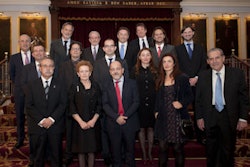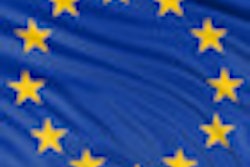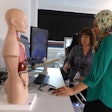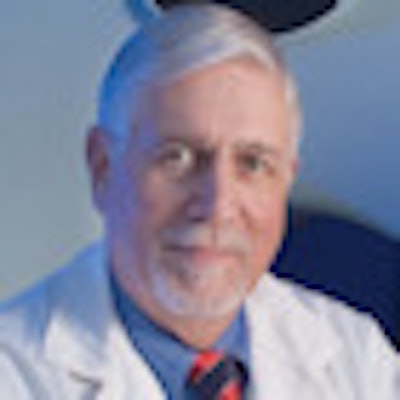
On 1 February, Dr. James Thrall stepped down as chairman of the department of radiology at Massachusetts General Hospital (MGH), ending a 30-year career as one of the leading figures in radiology. In this exclusive article, Dr. Thrall reflects on the changes he's seen over the past 30 years in medical imaging.
Dealing with relentless change stands out to me as the greatest challenge in leading two large radiology departments over the past 30 years. From my first day at Henry Ford Hospital (HFH) until my last day at Massachusetts General Hospital, every circumstance of practice was in almost constant flux -- new imaging and information technologies, new laws and regulations, changing economics, and far higher practice expectations from all stakeholders.
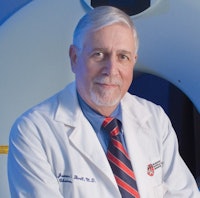 Dr. James Thrall of MGH reflects on 30 years in radiology.
Dr. James Thrall of MGH reflects on 30 years in radiology.The easiest of these challenges turned out to be new imaging technologies -- MRI, MDCT, and PET, among many others. Most radiologists welcome advances in imaging methods, and members of the faculties at both HFH and MGH were leaders in technical innovation. Happily, the respective hospital administrations recognized the value and the need for new technology and were quite supportive.
The net result of the explosion in new imaging methods over the past 30 years was a transformation in both clinical practice and research. Clinically, radiology went from being considered "ancillary" to increasingly being the arbiters of diagnosis astride the critical pathway of care for many, many diseases and conditions: Who needs an operation? How is the patient responding to therapy?
Unfortunately, our success enticed too many underqualified people to embrace imaging, leading to a disastrous combination of poor quality and overuse.
In research, radiology flourished equally with the introduction of functional and molecular imaging. We are no longer the weak sister at the U.S. National Institutes of Health (NIH), and our methods have been broadly adopted at both the research bench and for translational and clinical investigations. I am proud to be able to share that among departments at MGH, radiology now receives the second highest amount of NIH funding next to the department of medicine.
The switch to digital imaging
Managing the introduction of new information systems -- RIS, PACS, and voice recognition (VR) -- was far more problematic than introducing new imaging methods. Each of these initially took radiologists away from historic work paradigms.
For example, when we turned on a new RIS at MGH in 1988, we discovered that 10% of our cases were never being interpreted by a radiologist -- embarrassing. To address this, we needed to completely re-engineer our film-handling procedures, placing far more pressure on the radiology support staff and radiologists for timely reporting.
PACS and voice recognition probably would not have been implemented at MGH when they were if we had taken a vote. Early PACS software was clunky, and a number of our colleagues could not imagine how one could look at a CT scan without having eight sheets of film at a time on an alternator with 20 images per sheet. Some senior radiologists predicted dire results. What a leap of faith it took to make the change.
Interestingly, several weeks after we went live with PACS, the system crashed. Radiologists were given the choice of going back temporarily to film or waiting several hours for the PACS to be rebooted. Even with the prospect of having to stay late, not a single person wanted to go back to film. Once people experienced PACS, the deal was done. Today, no one can even imagine life without PACS.
When I look back, I realize we never mastered the management of hard-copy film -- no institutional discipline, too many lost or sequestered folders, too many unread cases. Moreover, the advent of MDCT and multisequence MRI would have completely overwhelmed us, had we not had PACS available. Last year, we put 165 million images into our PACS -- enough to bring out a cold sweat in thinking about printing film.
Voice recognition was the most challenging technology. I'm not sure that even today VR would win in a vote. Early VR systems were very cumbersome and often inaccurate, sometimes embarrassingly so when errors were not caught by the radiologist. Radiologists perceived themselves as doing the work of transcriptionists.
Thankfully, current VR systems are vastly improved, and it is clear that perceived service to referring physicians and patients improves dramatically as report turnaround times shorten.
The compliance tsunami
With respect to laws and regulations, the hallmark issue to me in the past 30 years has been the staggering increase in compliance requirements that affect all of medical practice, including radiology. Of course, we have always had to deal with licensure, credentialing and privileging, hospital accreditation, and state and federal laws addressing radiation, but today it almost seems as though physicians could spend half of their time meeting various new compliance requirements.
This was highlighted to me in a recent audit of one of our interventional areas at MGH, where 28 separate line items of compliance requirements were identified. Many of the issues could not logically be said to apply to most of our patients, while others were more suited to patients' interactions with other kinds of physicians. Overwhelming caregivers can lead to cynicism and "compliance fatigue."
By and large, new compliance issues typically appear well-intended and have merit. However, taken together, compliance requirements have become incredibly burdensome, difficult to manage, and sometimes duplicative -- for example, the Physician Quality Reporting Initiative versus Physician Quality Indicators. This can undermine physician morale and career satisfaction -- not so much for the requirements per se, but through a feeling of being constantly under the microscope and through a fear of inadvertently overlooking something like a HIPAA provision and running into draconian sanctions.
As I have watched the compliance tsunami engulf medical practice, I worry that we are overshooting the beneficial equilibrium between achieving higher quality and safety goals and what physicians can realistically bear, since the costs associated with new mandates are mostly unfunded.
The radiology bubble
Economically, radiology experienced a classic bubble in my 30 years as a department chairman. Tailwinds from new technology increased both the demand for imaging services and reimbursement per average case. These were coupled with increased efficiency from PACS, and led to remarkable increases in departmental income and compensation for individual radiologists.
While the economic vectors were all pointing up, we were lulled into thinking this was the way things were always going to be -- and should be. Wrong. As soon as imaging became the fastest-growing cost segment in healthcare, the knives came out and reimbursement cuts began, however flawed their logic. The bubble burst.
As a department chairman, it has been a special challenge to work through the implications of the bursting bubble and work on resetting expectations. Going forward, radiologists' incomes should still be comparatively favorable, but increases in compensation will likely be muted, and more risk will be involved in departmental and group income as private and government payors look for cost savings.
So, what is the bottom line? It's been great to have had the honor and privilege to serve as a department chairman. I have enjoyed working with some of the most outstanding people on the planet, and I feel we moved the needle at both HFH and MGH in many good directions for our specialty over 30 years.
Radiology has the opportunity to build on progress to date and to continue to invent transformational new methods. I hope that progress over the next 30 years will dwarf the past 30. The challenge to keep the needle moving is for others now. I wish you well. Good luck.
The comments and observations expressed herein do not necessarily reflect the opinions of AuntMinnieEurope.com, nor should they be construed as an endorsement or admonishment of any particular vendor, analyst, industry consultant, or consulting group.



